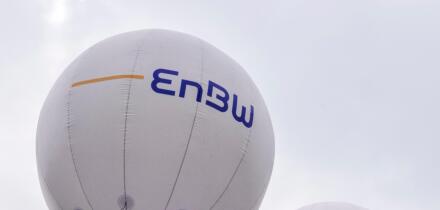It has issued a similar number of benchmarks (five EARNs along with two large taps, and, seven dollar Globals in 2020, compared to five EARNs, a tap, and, five dollar Globals in 2019) while the overall split in volumes across euros and dollars is almost exactly the same (45% in euros versus 34% in dollars in 2020, compared to a 45%/28% split in 2019) and there is very little difference in the investor distribution, says Richard Van Blerk, deputy head of benchmark funding.
“When we look at the levels at which we issued in 2019 and where we can issue now, again the difference is not significant,” he says.
The sense of stability in turbulent times is reinforced by EIB’s consistently executed and clearly communicated issuance strategy. In its benchmark EARN and Global programmes, which have minimum volume requirements of €3bn and $3bn, it works to ensure that investors have an on-the-run coupon bond in each of the standard maturities.

“The ability to refresh our curve frequently is both a testament to the depth and breadth of our franchise, as well as an opportunity to provide traders and investors with readily tradeable securities with the most up-to-date pricing metrics,” says Nicola Mercusa, senior capital markets officer.
This year in its EARN programme, it has issued in the three, five and seven year segments, and twice in the 10 year, while in the dollar Global format it has issued twice in the three year and three times in the five year segments. And among its 17 issuance currencies, EIB has also issued bellwether bonds in the Swedish krona, sterling, Polish zloty, Australian dollar and Canadian dollar markets.
“Our job is to ensure that over the course of each funding year, our assessment of investor demand, our judgement on timing and the reliability of our communications is more often on the ball rather than misplaced so that investors want to partake in EIB issuances repeatedly,” says Van Blerk.
The preferences of the SSA investor base in the dollar market make the long end a more challenging prospect than in euros. Of course, EIB constantly monitors the market for opportunities in the 10 year segment but given its need to issue in size, those opportunities are rare, says Van Blerk.
“Besides, we have the flexibility to issue Climate Awareness Bonds or Sustainability Awareness Bonds in smaller sizes than those from our benchmark programme,” he says. “For instance, this year we issued a $1.5bn CAB and a $1bn SAB in the 10 year bucket.”
Upside down
The 3,000 employees at EIB’s Luxembourg headquarters began working from home on March 12, as markets were gripped by such uncertainty that spreads in almost every asset class widened and new issuance for most looked nigh on impossible.
“What I think we got right very quickly was that the pandemic wasn’t just going to go away, we couldn’t wait it out and everything would be fine,” says Van Blerk. “We knew we had to get out into the bad weather and get on with it.”
EIB did just that, announcing a three year EARN on March 24, a week after the European Central Bank had made details public of its €750bn Pandemic Emergency Purchase Programme but before the stimulus had become fully functional.

The €3bn deal had the smallest oversubscription of any for EIB this year, at €3.75bn, but that has to be considered in the time and place it was issued. Furthermore, the quality of the order book ensured that the transaction tightened by several basis points in a short period of time.
“The way we see it, if not us then who?” says Mercusa. “We are very cognisant of the trade-off between the distinct absence of a first mover advantage in such situations, and being the one to set a clearing level. We strongly believe in the resilience of our franchise to volunteer to set the tone.”
Yields, spreads and new issue concessions had snapped back in after the reassurance given by global central banks, such that when EIB returned to the euro market a month later with a €5bn seven year EARN, it achieved its all-time record order book of €20bn.
“Oversubscription is often the outcome on an EIB benchmark, which is the consequence of intense preparations in order to minimise the possibilities of controllable variables being able to skew the result,” says Van Blerk. “Nevertheless, it is extraordinarily pleasing that we would get such a record subscription in the depths of the worst economic contraction we have ever seen.”
The EIB, though, is not taking for granted the strength of investor demand created by central bank action.
“Markets are well aware of the impact of QE as a support mechanism but they also know most of the issuers operating in the SSA market are the kind of institutions that in times of crisis tend to have larger funding needs,” says Van Blerk. “There is a supply-dynamic taking place as well.”
With the European Union gearing up to begin raising funds on the market for its €750bn programme of support for Member States, that supply dynamic might start to change. It is a fair bet though, that 2021 will continue to see EIB as a model of consistency, whatever the future brings.






